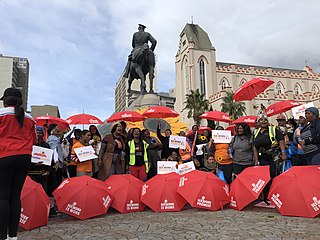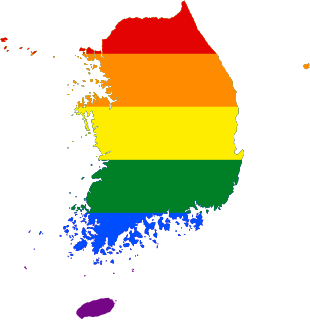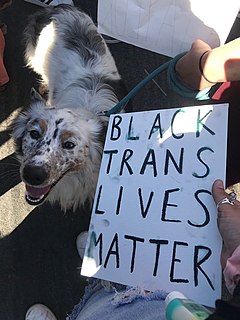
A sex worker is a person who provides sex work, either on a regular or occasional basis. The term is used in reference to those who work in all areas of the sex industry.

Sex work is "the exchange of sexual services, performances, or products for material compensation. It includes activities of direct physical contact between buyers and sellers as well as indirect sexual stimulation". Sex work only refers to voluntary sexual transactions; thus the term does not refer to human trafficking and other coerced or nonconsensual sexual transactions such as child prostitution. The transaction must take place between consenting adults who are of the legal age and mental capacity to consent and must take place without any methods of coercion, other than payment. The term emphasizes the labor and economic implications of this type of work. Furthermore, some prefer the use of the term because it grants more agency to the sellers of these services.
Prison sexuality consists of sexual relationships between prisoners or between a prisoner and a prison employee or other persons to whom prisoners have access. Since prisons are usually separated by sex, most sexual activity is with a same-sex partner. Two well known exceptions to this include sex with spouses/partners during conjugal visits and sex with a prison employee of the opposite sex.
HIV/AIDS has been a public health concern for Latin America due to a remaining prevalence of the disease. In 2018 an estimated 2.2 million people had HIV in Latin America and the Caribbean, making the HIV prevalence rate approximately 0.4% in Latin America.

Sexual and reproductive health (SRH) is a field of research, healthcare, and social activism that explores the health of an individual's reproductive system and sexual wellbeing during all stages of their life.
Women who have sex with women (WSW) are women who engage in sexual activities with other women, whether they identify themselves as lesbian, bisexual, or heterosexual, or dispense with sexual identification altogether. The term WSW is often used in medical literature to describe such women as a group for clinical study, without needing to consider sexual self-identity.

Sex workers' rights encompass a variety of aims being pursued globally by individuals and organizations that specifically involve the human, health, and labor rights of sex workers and their clients. The goals of these movements are diverse, but generally aim to legalize or decriminalize sex work, as well as to destigmatize it, regulate it and ensure fair treatment before legal and cultural forces on a local and international level for all persons in the sex industry.
Although Senegal is a relatively underdeveloped country, HIV prevalence in the general population is low at around 0.08 per 1000 people, under 1% of the population. This relatively low prevalence rate is aided by the fact that few people are infected every year– in 2016, 1100 new cases were reported vs 48,000 new cases in Brazil. Senegal's death due to HIV rate, particularly when compared it to its HIV prevalence rate, is relatively high with 1600 deaths in 2016. Almost two times as many women were infected with HIV as men in 2016, and while almost three times as many women were receiving antiretroviral therapy (ARV) as men, only 52% of HIV positive people in Senegal received ARV treatment in 2016.

HIV and AIDS is a major public health issue in Zimbabwe. The country is reported to hold one of the largest recorded numbers of cases in Sub-Saharan Africa. According to reports, the virus has been present in the country since roughly 40 years ago. However, evidence suggests that the spread of the virus may have occurred earlier. In recent years, the government has agreed to take action and implement treatment target strategies in order to address the prevalence of cases in the epidemic. Notable progress has been made as increasingly more individuals are being made aware of their HIV/AIDS status, receiving treatment, and reporting high rates of viral suppression. As a result of this, country progress reports show that the epidemic is on the decline and is beginning to reach a plateau. International organizations and the national government have connected this impact to the result of increased condom usage in the population, a reduced number of sexual partners, as well as an increased knowledge and support system through successful implementation of treatment strategies by the government. Vulnerable populations disproportionately impacted by HIV/AIDS in Zimbabwe include women and children, sex workers, and the LGBTQ+ population.
According to the Global Fund, Honduras is the Central American country most adversely affected by the HIV/AIDS epidemic. As of 1998, Honduras had the highest prevalence of HIV out of all seven Central American countries according to a study published by the office of the Honduran Secretary of Public Health. As of that same year, Hondurans made up only 17% of the Central American population, yet Honduras contained 50% of the initial AIDS cases in Central America and 60% of all Central American cases in 2001. In more recent years, new HIV infections have decreased by 29% since 2010 while AIDS-related deaths have increased by 11% since then. HIV/AIDS heavily affects the young, active, working population in Honduras, and HIV/AIDS deaths account for 10% of the overall national mortality rate. As of 2008, AIDS was the leading cause of death among Honduran women of childbearing age and the second-leading cause of hospitalization among both men and women. Sexually transmitted infections are common, and condom use in risky sexual encounters is sporadic and variable. HIV remains a mainly heterosexual epidemic in Honduras, as 90% of emerging infections are attributed to heterosexual transmission. It is estimated that the prevalence of HIV among Honduran adults is 1.5%.
In 2016, the prevalence rate of HIV/AIDS in adults aged 15–49 was 0.3%, relatively low for a developing country. This low prevalence has been maintained, as in 2006, the HIV prevalence in Mexico was estimated at around 0.3% as well. The infected population is remains mainly concentrated among high risk populations, men who have sex with other men, intravenous drug users, and commercial sex workers. This low national prevalence is not reflected in the high-risk populations. The prison population in Mexico, faces a fairly similar low rate of around 0.7%. Among the population of prisoners, around 2% are known to be infected with HIV. Sex workers, male and female, face an HIV prevalence of around 7%. Identifying gay men and men who have sex with other men have a prevalence of 17.4%. The highest risk-factor group is identifying transgender people; about 17.4% of this population is known to be infected with HIV. Around 90% of new infections occur by sex-related methods of transmission.. Of these known infected populations, around 60% of living infected people are known to be on anti-retroviral therapy (ART).
Various topics in medicine relate to lesbian, gay, bisexual, and transgender people. According to the US Gay and Lesbian Medical Association (GLMA), besides HIV/AIDS, issues related to LGBT health include breast and cervical cancer, hepatitis, mental health, substance use disorders, alcohol use, tobacco use, depression, access to care for transgender persons, issues surrounding marriage and family recognition, conversion therapy, refusal clause legislation, and laws that are intended to "immunize health care professionals from liability for discriminating against persons of whom they disapprove."
Violence against prostitutes occurs worldwide, both through physical and psychological forms. The victims are predominantly women. In extreme cases, violent acts have led to their murder while in their workplace.
Discrimination against people with HIV/AIDS or serophobia is the prejudice, fear, rejection, and stigmatization of people with HIV/AIDS. Marginalized, at-risk groups such as members of the LGBTQ+ community, intravenous drug users, and sex workers are most vulnerable to facing HIV/AIDS discrimination. The consequences of societal stigma against PLHIV are quite severe, as HIV/AIDS discrimination actively hinders access to HIV/AIDS screening and care around the world. Moreover, these negative stigmas become used against members of the LGBTQ+ community in the form of stereotypes held by physicians.
Life expectancy in Nicaragua at birth was 72 years for men and 78 for women in 2016. While communicable diseases such as dengue, chikungunya, and Zika continue to persist as national health concerns, there is a rising public health threat of non-communicable diseases such as diabetes, cardiovascular disease, and cancer, which were diseases previously thought to be more relevant and problematic for more developed nations. Additionally, in the women's health sector, high rates of adolescent pregnancy and cervical cancer continue to persist as national concerns.

The decriminalization of sex work is the removal of criminal penalties for sex work. Sex work, the consensual provision of sexual services for money or goods, is criminalized in most countries. Decriminalization is distinct from legalization.
Transgender health care, also known as gender-affirming care, includes the prevention, diagnosis and treatment of physical and mental health conditions, as well as sex reassignment therapies, for transgender individuals. Questions implicated in transgender health care include gender variance, sex reassignment therapy, health risks, and access to healthcare for trans people in different countries around the world.

The health access and health vulnerabilities experienced by the lesbian, gay, bisexual, transgender, queer or questioning, intersex, asexual (LGBTQIA) community in South Korea are influenced by the state's continuous failure to pass anti-discrimination laws that prohibit discrimination based on sexual orientation and gender identity. The construction and reinforcement of the South Korean national subject, "kungmin," and the basis of Confucianism and Christianity perpetuates heteronormativity, homophobia, discrimination, and harassment towards the LGBTQI community. The minority stress model can be used to explain the consequences of daily social stressors, like prejudice and discrimination, that sexual minorities face that result in a hostile social environment. Exposure to a hostile environment can lead to health disparities within the LGBTQI community, like higher rates of depression, suicide, suicide ideation, and health risk behavior. Korean public opinion and acceptance of the LGBTQI community have improved over the past two decades, but change has been slow, considering the increased opposition from Christian activist groups. In South Korea, obstacles to LGBTQI healthcare are characterized by discrimination, a lack of medical professionals and medical facilities trained to care for LGBTQI individuals, a lack of legal protection and regulation from governmental entities, and the lack of medical care coverage to provide for the health care needs of LGBTQI individuals. The presence of Korean LGBTQI organizations is a response to the lack of access to healthcare and human rights protection in South Korea. It is also important to note that research that focuses on Korean LGBTQI health access and vulnerabilities is limited in quantity and quality as pushback from the public and government continues.

Violence against transgender people in the United States includes sexual, physical, and emotional violence. These acts of gender-based violence may result in the death of a transgender person. The stigma surrounding the transgender community and those who are gender non-conforming accompanied by the assumption of their sexual orientation is often cited as the reason for these brutal acts. Transgender people are more likely to be violently attacked than cisgender ones. The murder rate for transgender individuals is estimated to be lower than that of cisgender people, though the trend is reversed for young black or Latina transgender women. Between 2008 and 2020, 271 murders on trans people were reported in USA, giving ca 0.83 murders per 1'000'000 inhabitants and placing USA somewhere in the middle between "safe" and "unsafe" states, with reservation for inaccuracies and possible underreporting from some locations.

The Centro de Promoción y Solidaridad Humana (CEPROSH) is a private, non-profit HIV-related services organization that is based in Puerto Plata in the Dominican Republic, with other offices in the Dajabón and Monte Cristi provinces. Founded initially in 1987 as the Comité de Vigilancia y Control del SIDA, their main mission was to promote education surrounding the spread of HIV/AIDS and other STIs in the Dominican Republic. In 1996, the organization rebranded to its current name, whilst also developing a more expansive mission to guide their approaches. CEPROSH offers psychological support, HIV screenings, consultations, prEP, and other HIV/AIDS and STI services.










